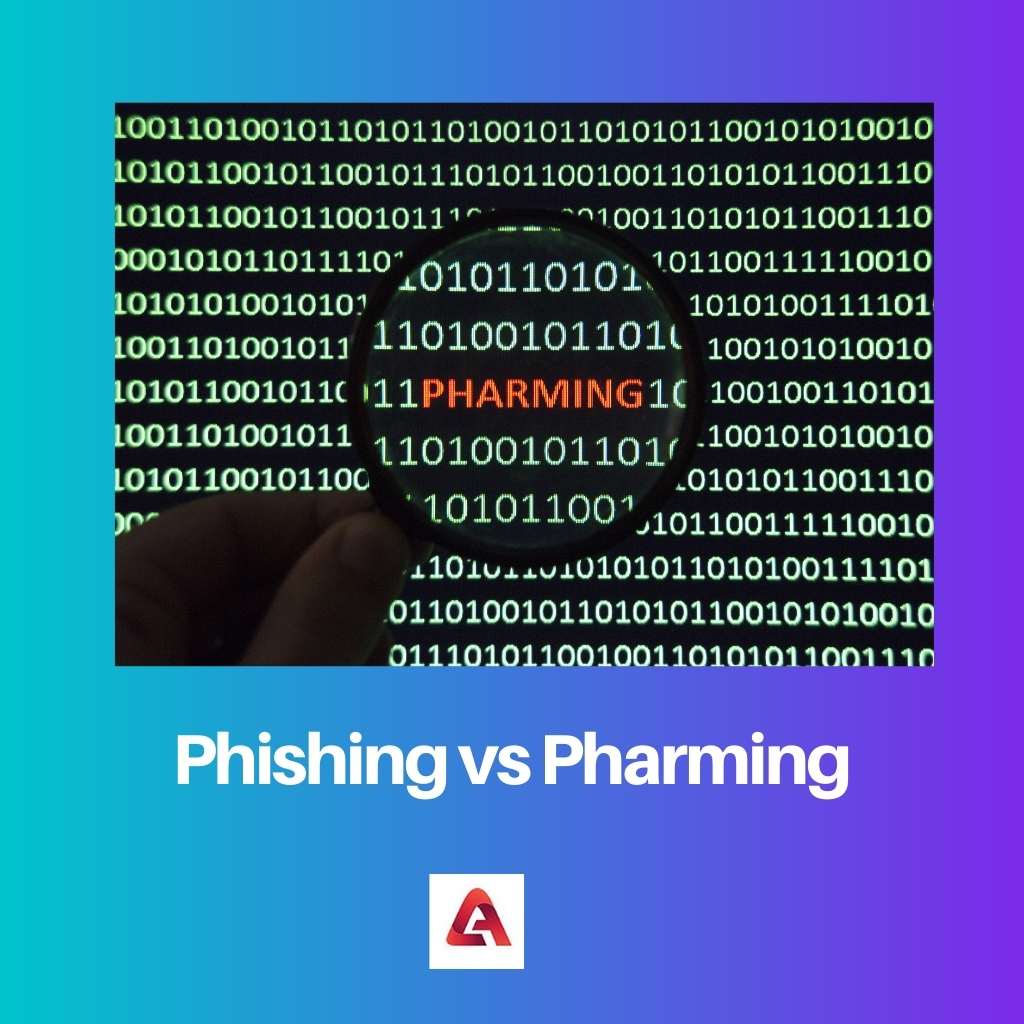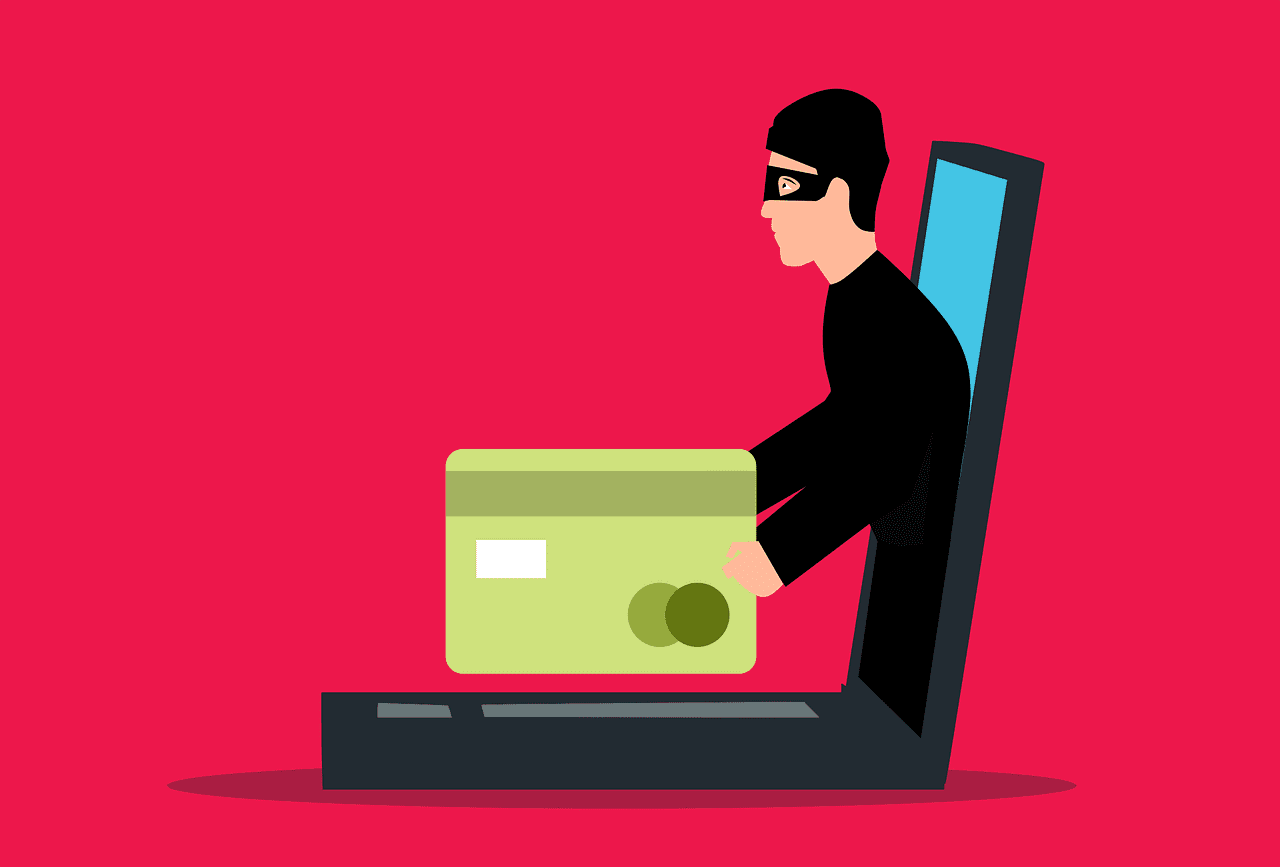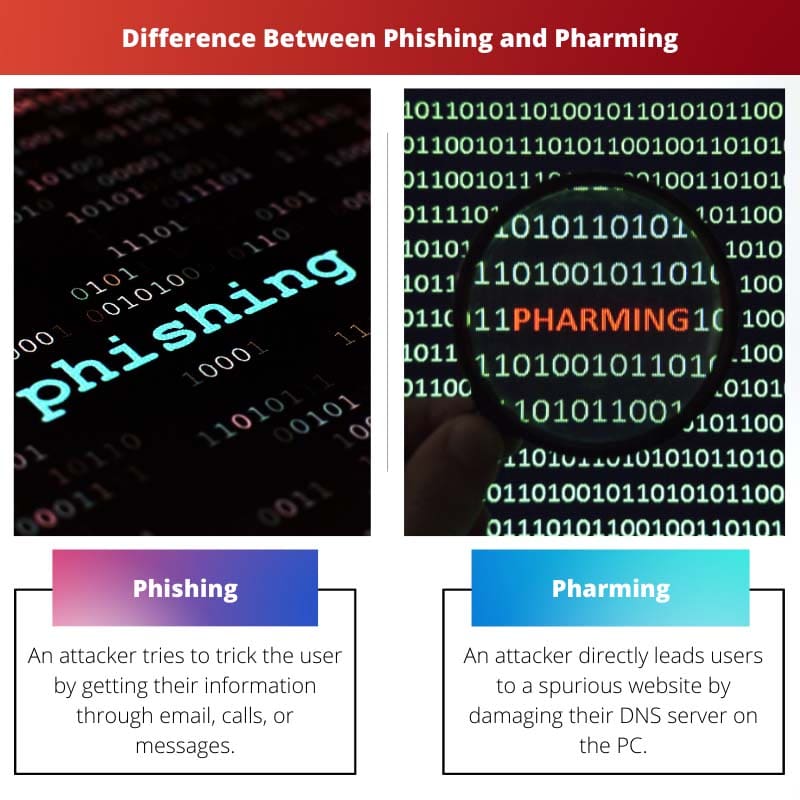Nowadays, people are easily tricked by hackers, especially in the case of providing personal information for dealing with any online transactions.
Phishing is acquiring the personal deeds of the user by enticing them with emails, calls, or messages. Pharming is an act of redirecting a large number of users to a fake site by exploiting DNS servers.
Key Takeaways
- Phishing attacks use deceptive emails or messages to trick users into revealing sensitive information.
- Pharming redirects users to fraudulent websites by manipulating DNS settings or exploiting vulnerabilities in website code.
- Both phishing and pharming are forms of online fraud that require user vigilance and robust security measures to prevent.
Phishing vs Pharming
Phishing is a scam where cybercriminals use fraudulent emails, messages, or websites to trick people into providing sensitive information. Pharming is an online scam where hackers redirect users from a legitimate website to a fake one without the user’s knowledge or consent.

Phishing is an illegal act where the hackers get into users’ computers by sending malicious spam messages or uploading malicious software like ransomware, in a way to trick the users to gain access to their sensitive information.
In this way, while the users navigate the sites, the hackers will mirror the screen, eventually gathering the information.
On the contrary, Pharming is also a cybercrime attack that occurs under the users’ noses. This illegal act directs the users from one website to another to install a potentially harmful program on the computer.
It is mainly done by changing the hosts’ files or exploiting DNS server software.
Comparison Table
| Parameters of Comparison | Phishing | Pharming |
|---|---|---|
| Definition | Pharming is challenging to identify as it involves website traffic and more users. | An attacker directly leads users to a spurious website by damaging their DNS server on the PC. |
| Identification | Phishing is easy to detect the illegal act of a hacker. | The attacker sends a message or email, which leads to obtaining the personal information of the user. |
| How it works | The attacker ameliorates the IP address in the user’s DNS server and directs it to a fake site. | The attacker seeks to a large group of people at one time. |
| Number of Victims | The attacker aims at one user/person at a time | Employing anti-pharming, anti-malware tools and securing your DNS service properly helps to avoid pharming |
| Avoided | Phishing can be eradicated by installing anti-phishing software on your computer. | Employing anti-pharming, anti-malware tools and securing your DNS service properly helps to avoid pharming. |
What is Phishing?
As it says above, Phishing is an illegal act where an attacker tries to get into a user’s website by sending spam messages, which could trick the users into revealing their confidential information.
Phishing can be done by either sending malicious messages or installing malicious software such as Ransomware on the user’s computer.
Moreover, the most common and easily done Phishing is social engineering, where the attacker physiologically manipulates the users in clicking the harmful element.
Furthermore, link manipulation is one of the Phishing techniques where misspelt links and URLs are created. The first act named Phishing, is back in the 1980s and was officially reported by Koceilah Rekouche while creating the cracking toolkit AOHell.
And soon enough, Phishing is cited as the most common cybercrime attack in 2020, where it is increased from 72% to 86% among online businesses.
The word is derived from phreaking, or fishing, implicating the idea of fishing the users’ sensitive information without their knowledge.
Moreover, Phishing is noticed in emails and includes other types, such as spear phishing, clone phishing, whaling & CEO fraud, voice phishing, page hijacking, SMS phishing, and calendar phishing.
Consequently, many solutions and training are introduced to prevent and reduce phishing attacks, like legislation, public awareness, and various technical security precautions.

What is Pharming?
On the other hand, Pharming is also one of the most commonly occurring cybercrime attacks around the world. However, pharming is an act of directing the users to a deleterious website or damaging the DNS server software on the computer.
To put it in simple words, pharming is just like Phishing but excludes the enticement of users into the process.
It is almost ubiquitous in businesses hosting e-commerce and online banking websites. The word pharming is a computer slang directed to the word farming, illustrating the process of cultivating and gathering the users’ confidential information.
Pharming involves exploiting DNS (Domain Name Server) software on the computer, changing the IP address of an authentic website into a malicious one.
Eventually, redirects the user to a potentially risky website.
Furthermore, one can identify whether their computer is under a pharming attack or not, via an unsecured connection, where instead of HTTPS, it will be written as HTTP and other misspelt & unfamiliar designs in the website.
Over and above, pharming can be prevented by installing anti-virus and anti-malware security software, besides being cautious.
Also, to be more cautious, one can enable two-factor authentication, switch to a more safe internet service provider, and use VPN service in a way to avoid pharming as much as possible.

Main Differences Between Phishing and Pharming
- Phishing is an illicit act of sending an enticing email or instant message to users by seeking their personal information without the user’s consent. On the other hand, Pharming is disturbing the DNS server of the user’s computer which changes the IP address of the site and redirects to a spurious website.
- Speaking of types, Phishing has various categories such as spear phishing, voice phishing, clone phishing, whaling fraud, page hijacking, calendar phishing, etc. Meanwhile, Pharming is commonly known as the word farming.
- Phishing focuses on single users while hacking their personal or private deeds, but Pharming tricks a large group of people at a time.
- Phishing can be avoided by installing anti-phishing software. Nevertheless, users should be more cautious and install antivirus and anti-malware security software to prevent pharming.
- The purpose of Phishing is to obtain exclusion information of the users and reduce their online security by luring them into social security numbers, credit/debit card deeds, account passwords, etc. Meanwhile, pharming is largely practiced through domain spoofing to overwhelm the volume of traffic over a site.




